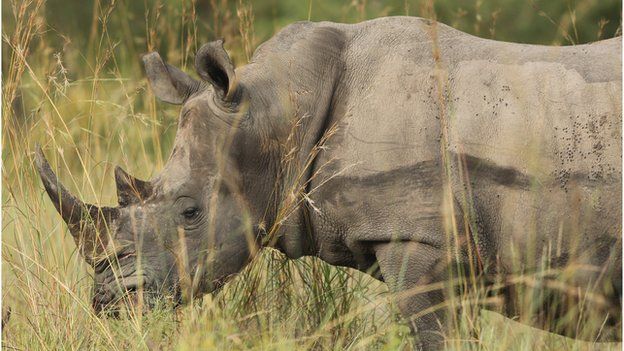SA rhino poaching record set in 2014
- Published

A record 1,215 rhinos were poached in South Africa in 2014, a 21% increase on the previous year, officials have said.
More than two-thirds were killed in the famed Kruger National Park.
The last few years have all seen new records set, with poaching fuelled by the belief in countries like China and Vietnam that horns have medicinal properties.
The lucrative market has attracted criminal gangs who use sophisticated technology to kill their quarry.
South Africa's environment minister Edna Molewa said more than 100 rhinos had been moved to "more secure locations" - some of them in neighbouring countries - in a bid to protect the animals.
"Through this method we aim to create rhino strongholds, areas where rhino can be cost-effectively produced," she said.
Despite successes through the re-location programme, Ms Molewa said the figures killed each year remained "worryingly high".
"The organised transnational illicit trade in rhino horn undermines our efforts," she explained.
"We therefore have to ensure that we continue to work together in stepping up all the measures that we have adopted."
The environment minister described poaching as part of an "multi-billion dollar worldwide illicit trade".
Conservationists say they are facing an ever greater challenge to protect animals against poachers who are equipped with sophisticated tools such as night-vision goggles and long-range rifles.
"Killing on this scale shows how rhino poaching is being increasingly undertaken by organised criminal syndicates," said Dr Carlos Drews, WWF's director of global species programme.
"The country's brave rangers are doing all they can to protect the rhinos but only a concerted global effort can stop this illegal trade. This includes South Africa scaling up its efforts to stop the poaching and Viet Nam taking urgent measures to reduce consumer demand."
- Published21 January 2015
- Published16 December 2014
- Published17 January 2014
- Published20 November 2014
- Published3 November 2011